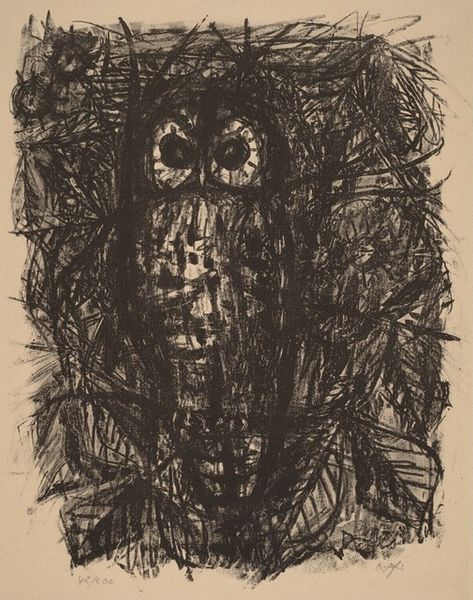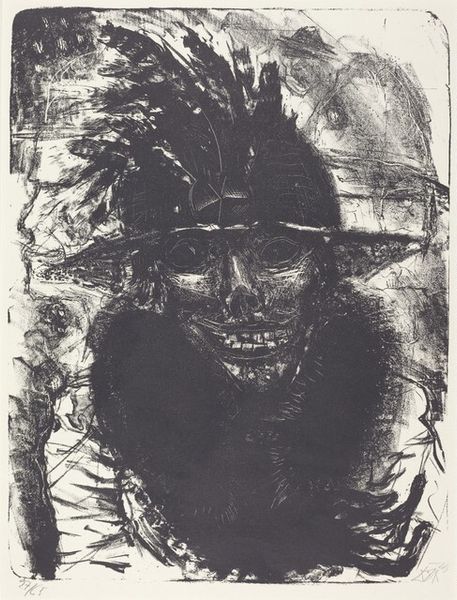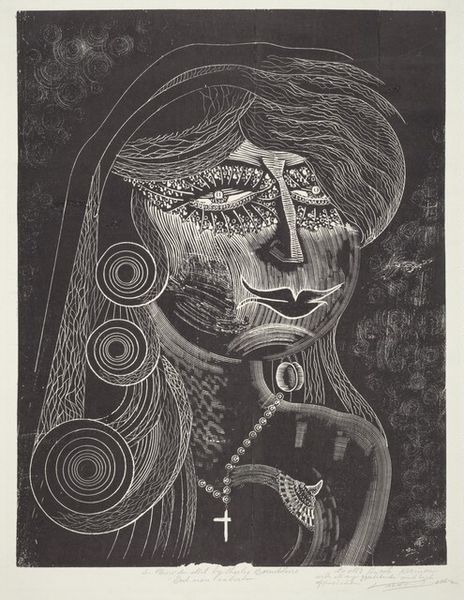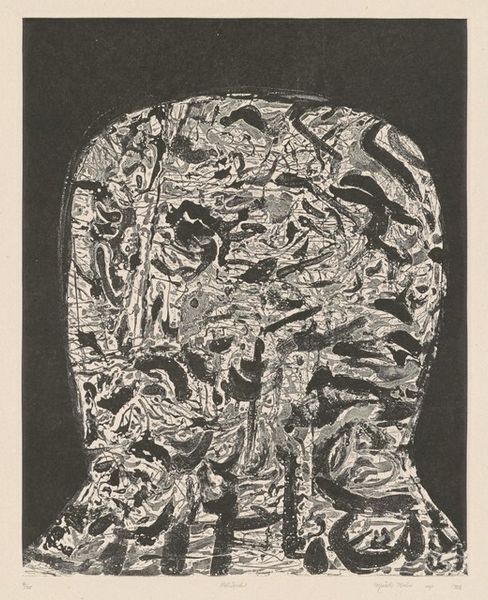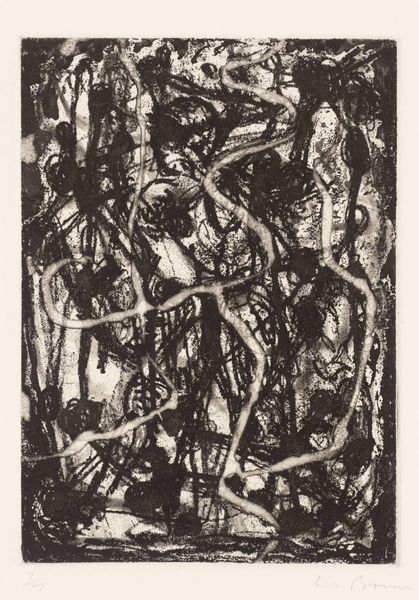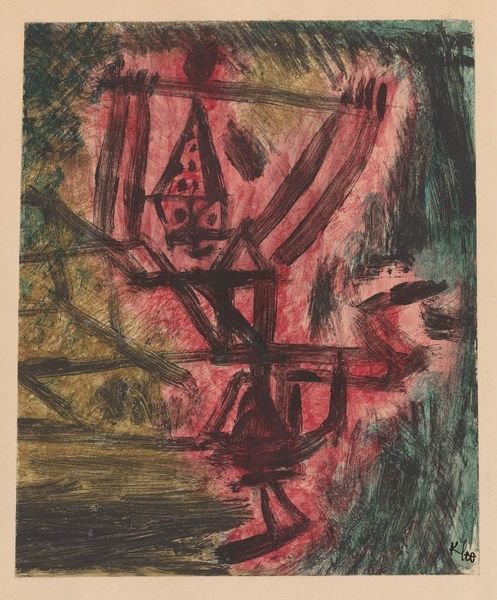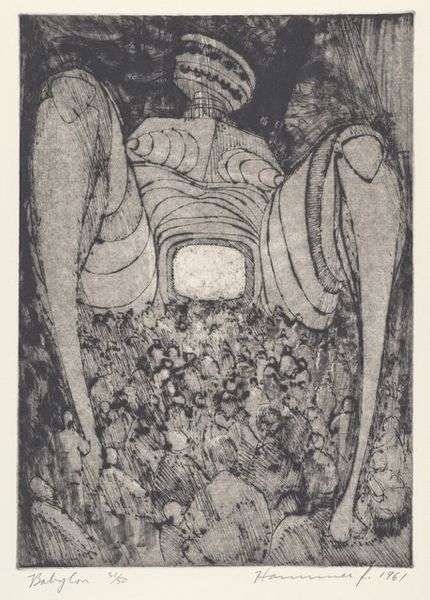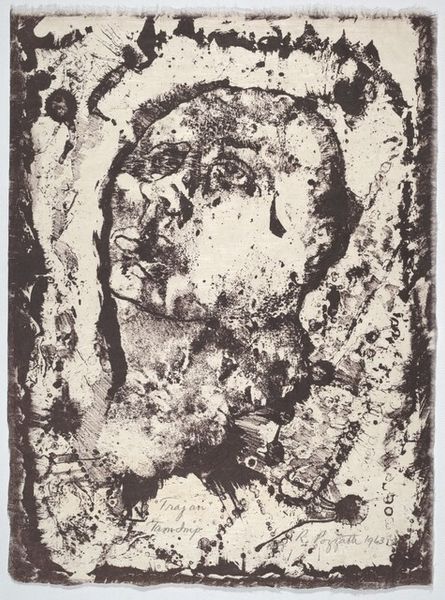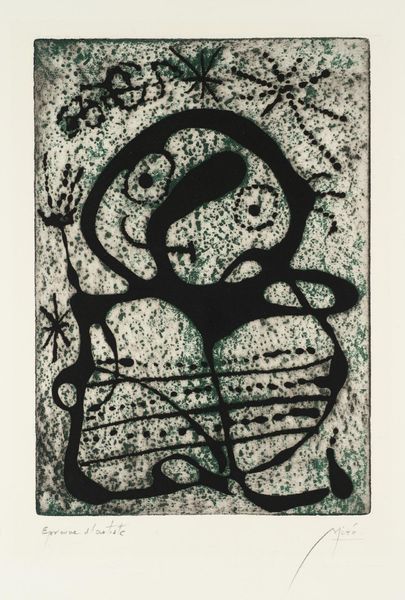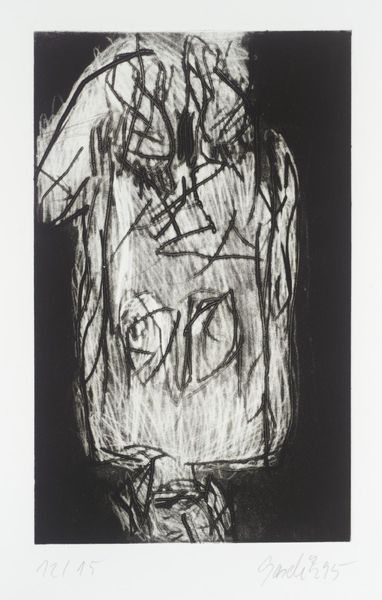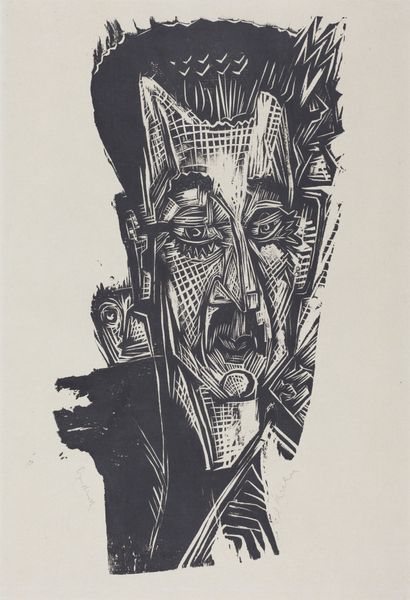
Copyright: Arnulf Rainer,Fair Use
Curator: Looking at this striking work, we have Arnulf Rainer's "Head of the Diver (Deny Your Birth)," a print from 1950 executed in ink. It's an intense expressionistic figuration. Editor: My first impression is chaos, really. A swirling mass of lines forming what seems to be a human head…but disrupted, fragmented. The density of the ink, the tight, controlled marks, speak to a really intense process. What's going on with the materiality here? Curator: Yes, that feeling of intensity absolutely resonates with the themes Rainer explored. There's a deliberate distortion, an exaggeration that serves to tap into deeper psychological spaces. He aimed, through visual disruption, to unravel conventional modes of seeing, referencing themes of repression and perhaps even rebirth, as alluded to by the title. The “diver,” plunging into the depths of the unconscious. Notice how the eyes are emphasized. Editor: The density suggests an obsessive, even repetitive process. You can see this relentless layering of marks—I'm wondering about the accessibility and affordability of printmaking processes as part of its power. Could Rainer have even considered alternative printmaking methods available at the time such as those using linoleum or woodcutting techniques that allow for an increase in production volumes, potentially influencing dissemination of similar intense expressive messages within society? Curator: Absolutely. He engages with primal, raw emotions. The geometric shapes imposed on the organic form, they serve as symbols of constraint, almost like the bars of a cage—psychological or societal. This reminds me of Jungian concepts: the Self obscured by imposed structures. Do you get a sense of confinement as well? Editor: Very much so. Thinking about the "cage" again makes me wonder about whether these particular inking strategies – this build up to such a dense opaque darkness – provided a certain creative efficiency given they tend to require relatively few chemicals, minimal equipment investment in contrast with oil paint. So perhaps its an attempt at broader artistic expression within a constrained set financial resources… It is still visually striking after all these years. Curator: A fascinating insight, thank you. In this visual journey we were also drawn towards contemplating the expressive use of geometric motifs to frame the depths that humanity explores beyond merely materialistic parameters in that era which informs so heavily the zeitgeist across multiple historical eras. Editor: Thanks—that’s how it hits me. It's compelling to consider the implications of materials that democratized creation influencing this iconic expressive style; its affordability shaping emotional narratives that still engage viewers today.
Comments
No comments
Be the first to comment and join the conversation on the ultimate creative platform.

